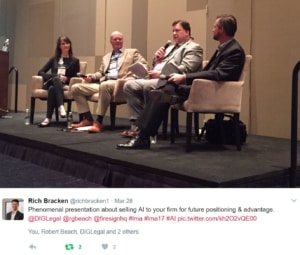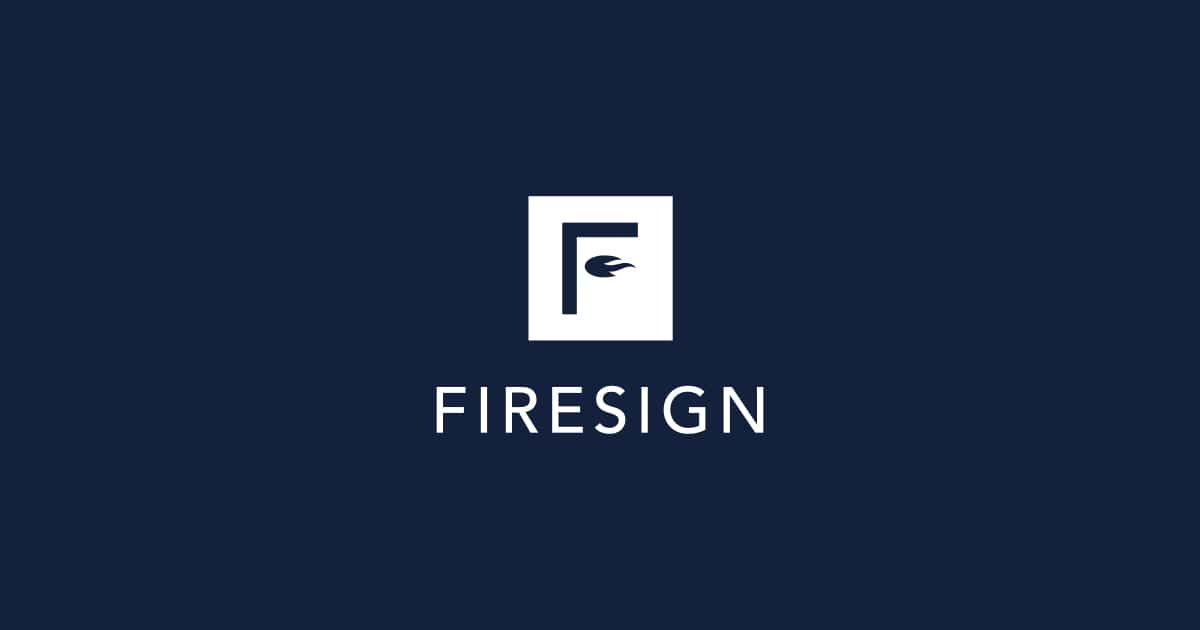I’m writin g this from 39,000 feet, flying home after the annual Legal Marketing Association convention in Las Vegas. More than 1,200 legal marketers convened to learn, share and connect, and much of this year’s buzz focused on how technology will shape the future of law. Pardon the pun, but I’m still processing all of the possibilities.
g this from 39,000 feet, flying home after the annual Legal Marketing Association convention in Las Vegas. More than 1,200 legal marketers convened to learn, share and connect, and much of this year’s buzz focused on how technology will shape the future of law. Pardon the pun, but I’m still processing all of the possibilities.
I was honored to moderate one of two panels on Artificial Intelligence in the legal context. Our panel included Bob Beach of Nexlaw Partners, a technology expert with a master’s degree in computer science; Patrick Fuller of Neota Logic, who has counseled firms on how to deploy data in competitive intelligence and operations; and Steve Fletcher, the chief information officer at Best Best & Krieger, a 200-person firm in California.
A few takeaways from our discussion:
- “Artificial Intelligence” doesn’t mean asking Skynet to draft all of your petitions, and it doesn’t have to be scary. It can mean automating routine processes like regulatory forms, so lawyers are freed up to focus on more complex and strategic work. One example is Foley & Lardner’s Global Risk Solutions, which was designed to help middle-market companies comply with the Foreign Corrupt Practices Act.
- Steve’s firm is working on its first AI project now – an app that will provide guidance on certain California regulations. It’s a great example of collaboration between a firm’s Marketing and IT departments: Steve saw a paper client guide on the topic and asked if it could be automated. He advocates bringing the marketing and IT teams together to daydream – a cool, powerful idea.
- Patrick shared that AI projects can stimulate cross-selling within a firm. Lawyers can be hesitant to cross-sell another practice area to clients if they are unsure about their peers’ delivery or billing habits. An AI project like Foley’s can help them overcome that hesitation – the product is uniform, easy to demo and predictably priced.
- AI can also help attract new clients; an app with a straightforward subscription fee might convert some prospects who were price-sensitive or averse to the billable hour.
- AI also can help law firms capture attorney knowledge. If a lawyer’s specific experience in a regulatory process is put into a decision tree in app form, that app stays with the firm even if the lawyer leaves or retires.
- We talked about how marketers can get buy-in for an AI project:
- Work with the IT department to identify the possibility of shared resources, team and budget. Present a unified front of marketing and tech.
- Make a prototype (even if it’s just an illustration in PowerPoint) so lawyers can see how it will look and function – that makes it more real than just a concept.
- Show that the AI project isn’t taking away work the firm would otherwise bill for – it should create revenue, not cannibalize it.
- Gather some attorney champions who will be excited about the possibilities for their practice.
- Whether it’s a simple form app or Ross, the “digital attorney,” AI brings efficiency and fundamental change. Allen & Overy, for example, created an AI system that takes the time needed to draft a banking document from three hours to three minutes. If you’re an associate who is compensated on billable hours, this is scary stuff – law firms must adjust compensation models to account for the new reality.
Ultimately, as Bob said, it’s important to remember that clients aren’t asking for AI for AI’s sake; they want you to solve their problems faster, better, cheaper and more proactively. AI may be one way to help, but as with all legal marketing, we can’t be doing it for ourselves. We have to know the clients’ actual problems first, then look for enlightened solutions.
The Legal Watercooler covered the first AI panel of the convention here.

